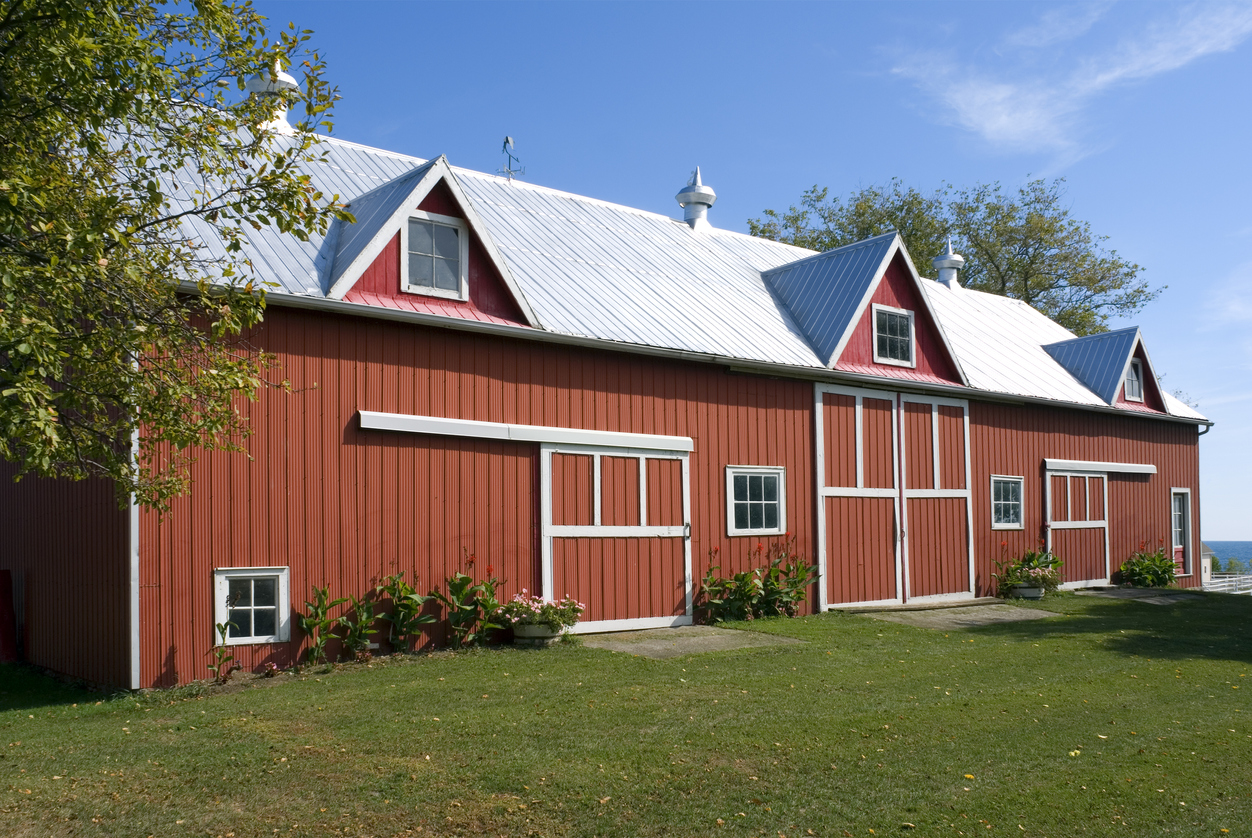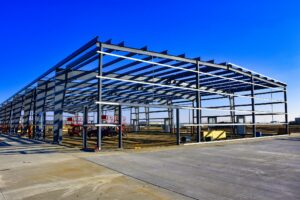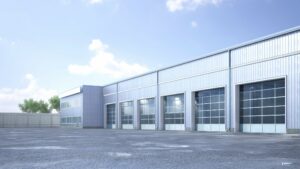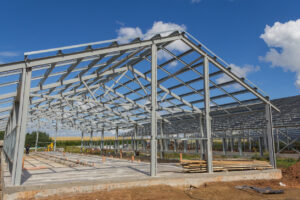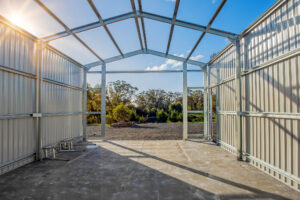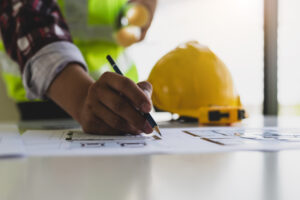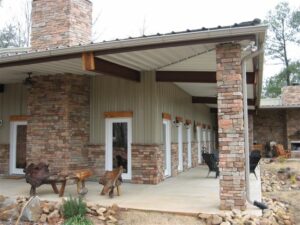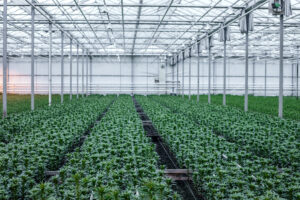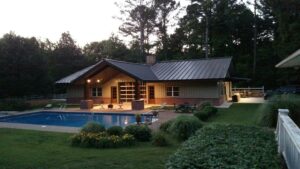Designing and building in fire stations is crucial for community safety and resilience. The need for more of these buildings cannot be overstated, especially considering the 2024 statistics which revealed 1,091 home fire fatalities.
In 2022, there were 1,504,500 fires, indicating a 12.2% increase from the number in 2013. The recorded deaths in 2022 were 3,790, representing an 18.6% increase from 2013. Additionally, the dollar loss was $18.1 billion, reflecting a 28.9% increase from 2013.
Fire station buildings serve as critical hubs for emergency response, housing vital equipment, providing shelter for firefighters, and fostering a sense of security for the communities.
In this blog post, we’ll discuss the unique considerations, funding, planning, design and construction process involved in fire station building projects.
Table of Contents
- Understanding the Importance of Fire Station Infrastructure
- Planning and Designing Fire Station Building Projects
- Funding and Budgeting for Fire Station Construction
- Construction Process of Fire Stations
- Postconstruction Considerations
- Conclusion
- Frequently Asked Questions
Understanding the Importance of Fire Station Infrastructure
A well-functioning fire station is vital for maintaining community safety and protecting lives and property. Fire stations serve as the backbone of the emergency response system, providing a base for firefighters to operate and ensuring quick response times.
Understanding the importance of fire station infrastructure is key to creating a safe and efficient environment for our firefighters.
The Role of Fire Stations in Community Safety
Fire stations play a crucial role in safeguarding the community by providing emergency response services, such as firefighting, rescue operations, and medical assistance. These stations act as strategic hubs strategically located to ensure rapid response times across the designated area.
By being near residential and commercial areas, fire stations can greatly reduce response times and enhance overall safety.
Moreover, fire stations serve as community centers where firefighters actively engage with the public to promote fire safety and prevention.
They conduct educational programs, host open houses, and participate in community events to raise awareness about fire hazards and the importance of emergency preparedness.
By fostering a strong relationship between firefighters and the community, fire stations create a sense of trust and collaboration, further enhancing community safety.
Did You Know?
In 2022, cooking was responsible for the majority of residential fires, accounting for 47.7% of incidents.
Key Features of Modern Fire Station Design
Modern fire station designs consider various factors to meet the specific needs of firefighters and enhance operational efficiency. Some of the key features include:
- Spacious vehicle bays to accommodate firefighting vehicles and equipment.
- State-of-the-art training facilities to ensure ongoing skill development of firefighters.
- Functional and ergonomic living quarters to promote rest and well-being.
- Advanced communication systems for seamless coordination with other emergency services.
- Incorporation of technology, such as fire detection and alarm systems, to ensure early intervention.
Additionally, modern fire stations prioritize sustainability and energy efficiency. They incorporate green building practices, such as solar panels, rainwater harvesting systems, and energy-efficient lighting, to minimize their environmental impact.
By adopting these eco-friendly measures, fire stations not only contribute to the overall well-being of the community but also set an example for sustainable infrastructure development.
Furthermore, fire station designs take into account the evolving needs of firefighters. They include dedicated spaces for physical fitness and mental wellness, recognizing the importance of maintaining the health and well-being of those who risk their lives to protect others.
By providing these amenities, fire stations create a supportive environment that enables firefighters to perform at their best and effectively respond to emergencies.
Planning and Designing Fire Station Building Projects
Proper planning and design are critical for the success of fire station building projects. From site selection to architectural considerations, attention to detail in these stages can significantly impact the overall functionality and sustainability of fire stations.
Site Selection and Evaluation
Choosing the right site for a fire station requires careful evaluation of various factors. Accessibility, proximity to high-risk areas, and topography are essential considerations.
However, there are additional aspects that need to be taken into account to ensure the best possible location for a fire station.
One important factor to consider is the demographic distribution of the area. It is crucial to analyze the population density and growth patterns to determine the optimal location for a fire station.
By identifying areas with high population density and potential growth, fire stations can be strategically placed to minimize response times and ensure efficient emergency services.
Another consideration is the availability of utilities and infrastructure. Fire stations require a reliable supply of water, electricity, and communication systems to effectively respond to emergencies.
Evaluating the proximity and reliability of these utilities is essential to ensure uninterrupted operations and timely response.
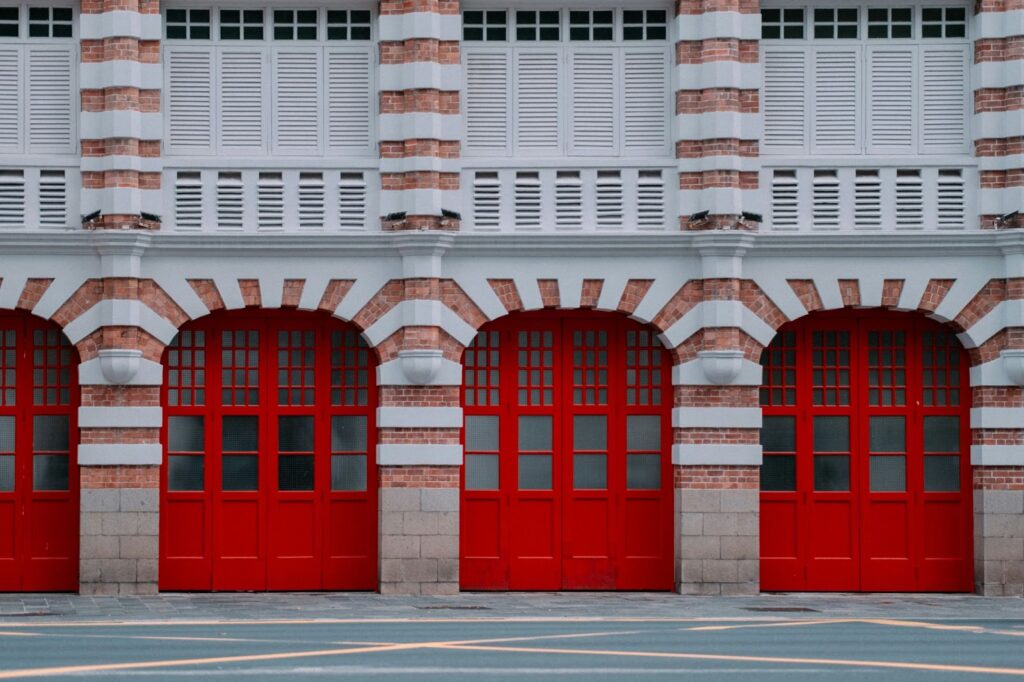
Architectural Considerations for Fire Stations
Architectural design plays a crucial role in creating a functional and visually appealing fire station. While the layout and separation of areas are important, other architectural considerations can greatly enhance the overall effectiveness of a fire station.
One such consideration is the incorporation of smart technology. By integrating advanced systems such as automated vehicle tracking, real-time incident reporting, and remote monitoring, fire stations can improve their response times and coordination.
These technological advancements can also enhance the safety of firefighters by providing them with real-time information and situational awareness.
Additionally, the architectural design should prioritize the well-being of firefighters. Creating spaces that promote physical and mental health is crucial.
This can be achieved through the inclusion of fitness facilities, relaxation areas, and adequate natural lighting. A well-designed fire station can contribute to the overall morale and productivity of the firefighters.
Did You Know?
With approximately 9% of all firefighters being female, new fire station designs are moving away from traditional dormitory-style sleeping quarters to accommodate a diverse workforce.
Incorporating Sustainability in Fire Station Design
Sustainability is an essential aspect of modern fire station design. While the integration of energy-efficient systems is important, other sustainable practices can be incorporated to further enhance the environmental impact of fire stations.
One such practice is the use of green materials in construction. By opting for sustainable building materials such as recycled steel, low VOC paints, and renewable flooring options, fire stations can reduce their carbon footprint and promote a healthier indoor environment for firefighters.
Furthermore, landscape design can also contribute to the sustainability of fire stations. Incorporating native plants, rain gardens, and permeable pavements can help manage stormwater runoff and reduce the strain on municipal drainage systems.
These green infrastructure elements not only enhance the aesthetics of the fire station but also contribute to the overall ecological balance of the surrounding area.
In summation, proper planning, site selection, and architectural considerations are crucial for the success of fire station building projects.
By evaluating various factors and incorporating sustainable practices, fire stations can be designed to not only meet the immediate needs of the community but also contribute to a greener and more resilient future.
Funding and Budgeting for Fire Station Construction
Funding and budgeting play a crucial role in realizing fire station building projects. Careful financial planning ensures that the necessary resources are available to complete the construction within the allocated budget.
When embarking on a fire station construction project, it is essential to consider not only the initial costs but also long-term financial sustainability. This includes factoring in maintenance expenses, operational costs, and potential future expansions.
By creating a comprehensive budget that accounts for all these aspects, project managers can better prepare for any financial challenges that may arise throughout the project’s lifecycle.
Estimating Construction Costs
Accurately estimating construction costs is vital in determining the feasibility of fire station projects. Factors such as site preparation, building size, material selection, and specialized equipment must be considered.
Engaging experienced construction professionals and conducting thorough cost analyses enables project teams to anticipate expenses and make informed decisions.
In addition to the direct construction costs, it is crucial to account for indirect expenses such as permits, inspections, insurance, and legal fees.
These often-overlooked costs can significantly impact the overall budget if not properly accounted for from the outset.
By conducting a detailed cost breakdown that includes both direct and indirect expenses, project stakeholders can ensure a more realistic budget projection.
Exploring Funding Options
Funding for fire station projects can come from various sources, including government grants, community fundraising, and private partnerships.
Collaborating with local authorities, fire departments, and community stakeholders can help identify potential funding avenues.
Additionally, exploring partnerships with philanthropic organizations or seeking sponsorship opportunities can further support the financial requirements of the project.
It is also important to consider innovative funding models such as public-private partnerships or crowdfunding campaigns.
These alternative funding sources can not only provide financial support but also foster community engagement and ownership of the fire station project.
By diversifying funding sources and leveraging different financing mechanisms, project teams can enhance the project’s financial resilience and sustainability.
Check out: Navigating Financing Options For Steel Building Projects
Construction Process of Fire Stations
The construction phase of fire station building projects requires meticulous planning and management to ensure timely completion and adherence to quality standards. It involves a series of intricate steps that must be carefully coordinated to create a safe and functional facility for firefighters and emergency responders.
One crucial aspect of the construction process is site selection. Fire stations need to be strategically located to ensure quick response times to emergencies within their designated service area.
Factors such as proximity to major roads, population density, and geographic features all play a role in determining the ideal location for a fire station.
Choosing the Right Construction Team
Engaging a knowledgeable and experienced construction team is vital for the successful execution of fire station projects. Selecting a contractor with demonstrated experience in similar projects ensures an understanding of the unique requirements associated with fire station construction.
Additionally, close collaboration between the project team and the contractor promotes effective communication and timely decision-making throughout the construction process.
Architectural design is another critical component of fire station construction. The layout of the facility must facilitate efficient operations, including vehicle access, equipment storage, living quarters for on-duty personnel, and administrative offices.
Attention to detail in the design phase helps optimize workflow and ensures that the fire station serves the community needs.
SteelCo coordinates all aspects of your construction projects, including design, procurement, final inspection, and issuance of a certificate of occupancy. Our team of industry experts and network of trusted subcontractors ensure that your custom needs are handled with precision and attention to detail.
Overseeing the Construction Phase
The construction phase demands a dedicated project manager to oversee the process and maintain quality control. Regular site visits, construction progress monitoring, and inspections help identify and address potential issues promptly.
Effective project management ensures that the construction is completed within the specified timeframe and meets all necessary safety and quality standards.
Quality materials and construction techniques are essential for building a fire station that can withstand the demands of emergency response operations. From durable flooring materials that can withstand heavy fire trucks to fire-resistant building materials that enhance occupant safety, every detail must be carefully considered to ensure the longevity and functionality of the facility.
Postconstruction Considerations
Once the construction phase is complete, attention must be given to postconstruction considerations to ensure the long-term functionality and efficiency of the fire station.
Fire Station Maintenance and Upkeep
Regular maintenance and upkeep are essential to keep the fire station operating at its optimal level. Firefighting equipment, vehicles, and facilities need to be regularly inspected, serviced, and updated.
Creating a comprehensive maintenance plan and adhering to it ensures fire station longetivity and personnel safety.
Evaluating the Project’s Success
After completing a fire station building project, evaluate its success in meeting the desired objectives and outcomes. This evaluation involves assessing factors such as response times, operational efficiency, and user feedback.
By gathering insights and lessons learned, future fire station projects can be continuously improved to better serve their communities.
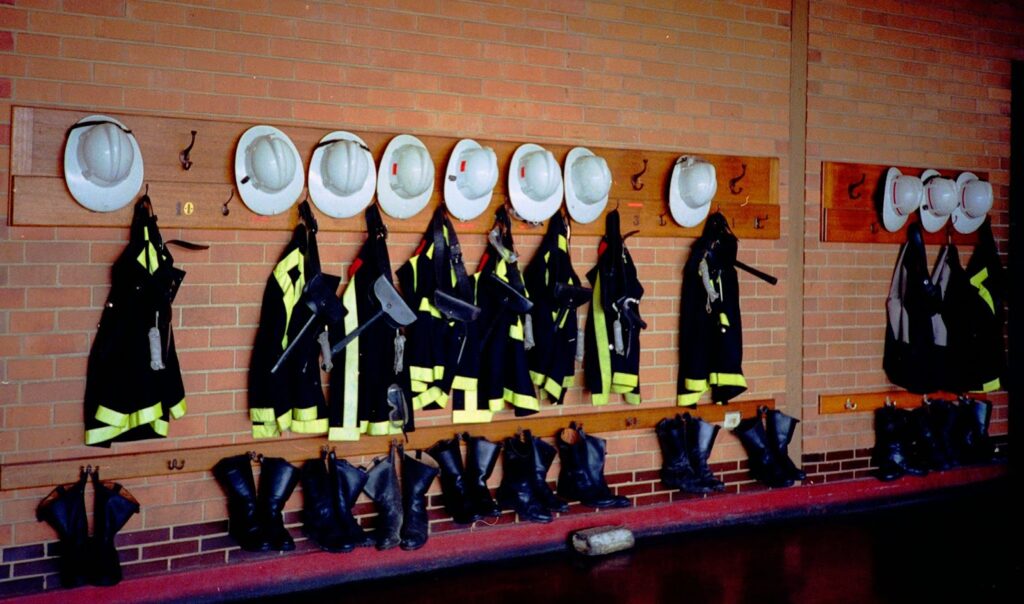
Conclusion
Fire station building projects require careful planning, design, and execution to ensure community safety and emergency responses.
By understanding the importance of fire station infrastructure, considering key features of modern fire station design, and implementing sustainable practices, we can create efficient and resilient fire stations.
SteelCo has 23+ years of experience dropshipping prefabricated metal building materials nationwide and a combined 100+ years of team experience in PEMB buildings.
Our team of experts from Project Support Specialists and Sales Consultants, to our in-house Designer, Architect, and more ensures you have the necessary customizable steel building kits to construct your ideal building with industry-leading turnaround times and service.
We deliver custom prefab steel structures tailored to your needs, including steel panels, framing, roofing, and other material requirements. We work with suppliers who comply with industry standards such as the MBMA, AISC, and AISI, ensuring top-quality steel materials for your project. Learn more about our comprehensive construction services.
—————————
Frequently Asked Questions
How much does it cost to build a fire station?
Cost of building a fire station can vary depending on location, size, design specifications, and cost of materials and labor. Based on the latest data available, the average cost ranges from $2 million to $10 million.
What are the typical financing options available for fire station construction?
Financing the construction of a fire station can be achieved through various methods, including federal grants like the Community Facilities Direct Loan & Grant Program, proposed legislation such as the Fire Station Construction Grants Act, and the Assistance to Firefighters Grants.
Other options include lease financing, municipal bonds, public-private partnerships, capital campaigns, and state and federal funding programs. Each option offers distinct advantages and requirements, and it’s crucial to consult with financial experts.
What are the potential tax benefits or incentives associated with building a fire station?
Investing in fire station construction can offer several potential tax benefits and incentives. Notably, under Section 179 of the U.S. Internal Revenue Code, small businesses can write off the full cost of commercial fire sprinkler systems as an expense of up to $1.04 million. This immediate cost recovery of the upfront investment and applies to upgrading existing systems or retrofitting systems in existing structures.
What are the staffing requirements for a fire station?
The staffing requirements for a fire station are crucial for ensuring effective and safe operations. The International Association of Fire Fighters, recommends four firefighters on each engine to meet safe and effective fire suppression services. The Occupational Safety & Health Administration (OSHA) also has a two-in, two-out rule.









